Best Kukri Knife On The Market 2025 — Lessons From The Forge And Field
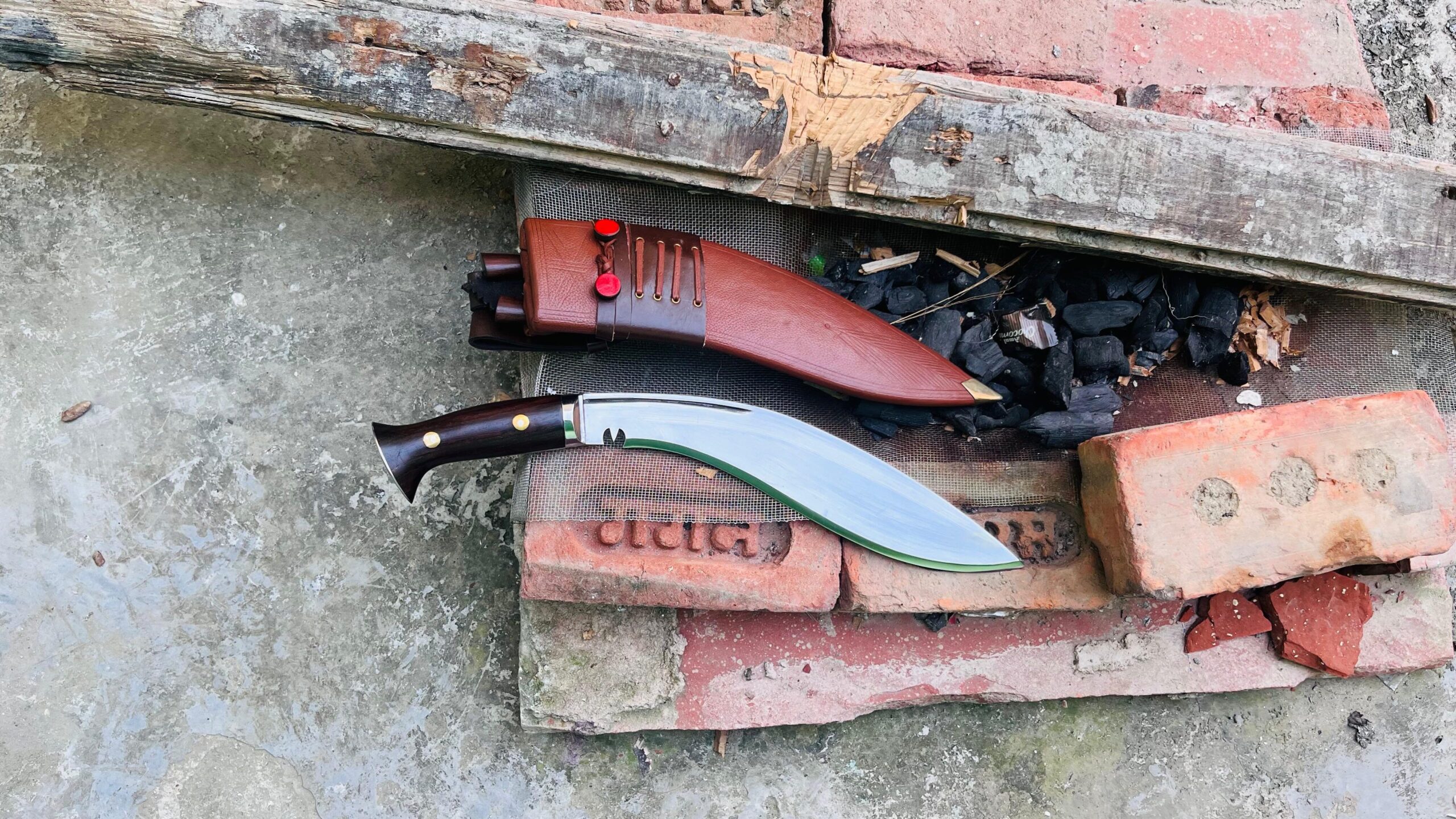
There’s a sensation that you get when you first grip a Kukri Knife. The curve settles heavily in your palm, the weight leans forward, and before you’ve so much as swung it, you know it was conceived to cut deeper than most blades of its size. Curious about kukris, I’ve been handling them for years at my Kukri house, Himalayan Blades, selling them to collectors and outdoorsmen (and even taking many journeys into the woods myself to see which live up to their name).
The kukri isn’t just a knife. It’s part of Nepalese identity, the soldier’s best friend, and an outdoor survival tool. In 2025, the buyers are spoiled for choice. There are machine-made models from big brands and handmade blades forged by traditional Kamis (blacksmiths). The question is not going to be where can you find a kukri knife — it’s more about finding the one for you, that will suit your hand and what you want to use it for.
How to do exactly that is my guide for you here.
Why the Kukri Knife Remains Popular
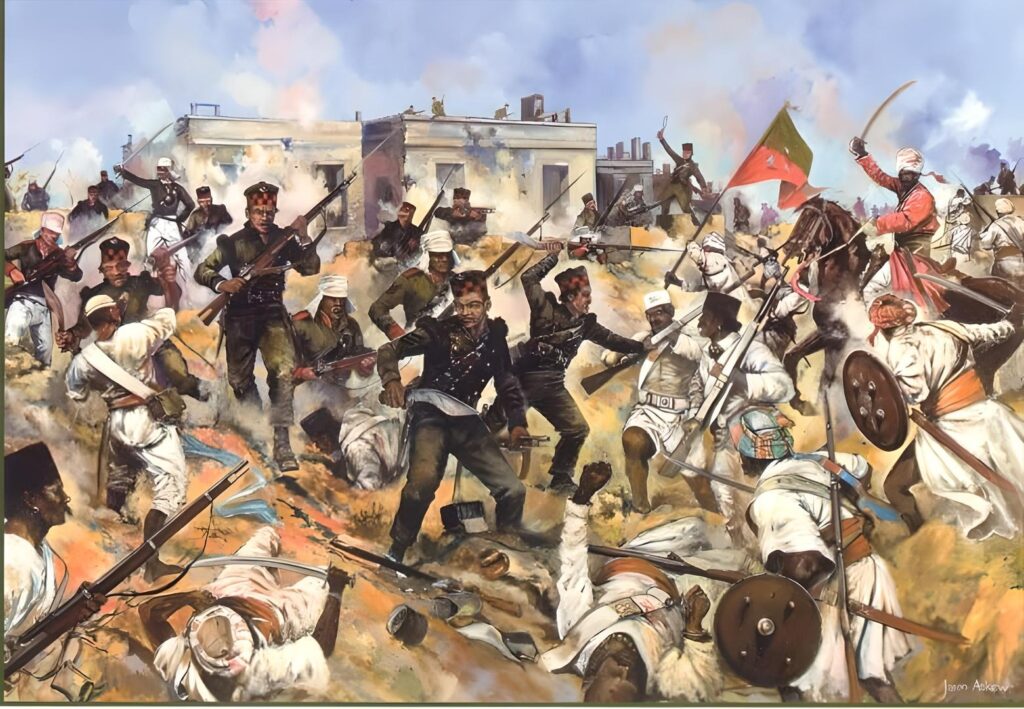
At first, I had the impression that kukris(Khukuri) were more like weapons. After all, they’re famous for being worn by Gurkha regiments. Half the story, but only half. You spend a week in a Nepali village and you will see families using the kukri to chop wood, trim bamboo, gut their goats for the festival dinner, and even dig into the soil.
That’s the brilliance of the design. Unlike a machete, which is essentially a long, flat blade, the kukri’s curve imparts more power into the cut. It’s why a 13-inch kukri can out-chop a machete that’s half as long. Meanwhile, the narrow bit where it meets the handle allows you to do more precise work — cleaning fish, dropping paper-thin slices of radish or zucchini, shaving wood sticks.
I’ve tested dozens of blades in my backyard and in my kukri house and the field, and there’s no knife I trust more than the kukri to split wood in the morning and dice onions in camp at night without switching tools.
What is Special About a Kukri Knife
I’ve learned in these years to forget all that fancy advertising and concentrate on the basics. Here’s what I would consider when choosing a kukri knife in 2025:
Tang Strength
The tang is in the piece of steel that goes into the handle. A full-tang kukri is rock-solid, like a single piece of steel with wooden wrapping. There’s what I haul out for heavy chopping. Traditional rat-tail tangs can be fine if well fitted, but I’ve seen some snap cheap ones. Unless it’s a ceremonial kukri, I prefer full tang.
Balance and Weight
The kukri is notorious for being tip-heavy. And that is what gives it its chopping power. But there’s a sweet spot. Too heavy at the end, your wrist is going to be killing you after 10 minutes. Too light and you lose power. I test by hacking through saplings — a good kukri knife feels like it’s performing half the work for you.
Handle Comfort
Handles mean a lot more than people realize. I’ve picked up kukris that were pretty, but it shredded the skin of my hand after 30 minutes. The finest handles — whether of Indian rosewood, buffalo horn or Micarta — are designed to meld seamlessly and don’t get slick when wet. I have to say, I love rosewood for its warmth and grip. Micarta is bulletproof, though not as traditional.
Sheath Security
The scariest thing that ever happened to me was the moment a kukri fell out of a drawstring sheath during hiking. Ever since, I check the sheath tension. The kukri has a sheath that grips, yet releases when it’s time for you to use it.
Edge Geometry
Here is where many buyers fall down. A kukri does not need a thin razor edge — it will chip on the first hard log you put it to. A slightly convex edge would be ideal: sharp enough to bite, thick enough to take a beating. At Himalayan Blades, we grind out our working kukris at about 25 degrees per side fir rugged use.
Why I Prefer Using 5160 Steel in Kukri Knives
If I had one lesson I thought should predominate, it is this: steel counts more than fashion. I’ve tested kukris in various steels, but when it comes to outdoor work, there’s nothing like 5160 spring steel.
Durability: I’ve accidentally slammed a 5160 kukri through bone, chunk wood and even rock. It does blur, yes, but it doesn’t crack.
Edge Retention: Not the hardest edge in the world, thank God. Harder steels chip; 5160 bends and snaps back.
Sharpening: I’ve even resharpened one in the middle of a trek on a river stone. You try that with the harder steels; you will be grinding all night.
Heat Treatment: When properly heat-treated, 5160 runs a similar hardness to off-the-shelf stainless steel, but with far better wear resistance and the ability to take quite a literal beating.
Every kukri we produce is oil quenched and double tempered at Himalayan Blades. I’ve bent more than my fair share of prototypes to locate the sweet spot, and time and again it’s 5160 that holds up better than everything else.
Different Kinds of Gurkha Knife: What They Are Made For?
- Every kukri knife is not designed for the same task. Here’s how I categorize them:
- Tactical Kukri Knives: Heavy, solid for combat and survival (MK2, MK1, Bhojpure type).
- Utility & Camping Kukris: Lightweight-lighter to carry, shorter (easy) for daily chores (Afghan Kukri).
- Combat Based Light Kukris: Thin, fast, hollow forged blades like the Serupate.
- Collector’s Pieces: Gorgeous ritual designs with accents of decor, such as the Royal Tin Chira.
My Recommendations: The Best Kukri Knives to Buy in 2025
MK4 Kukri Knife is Rare and Practical
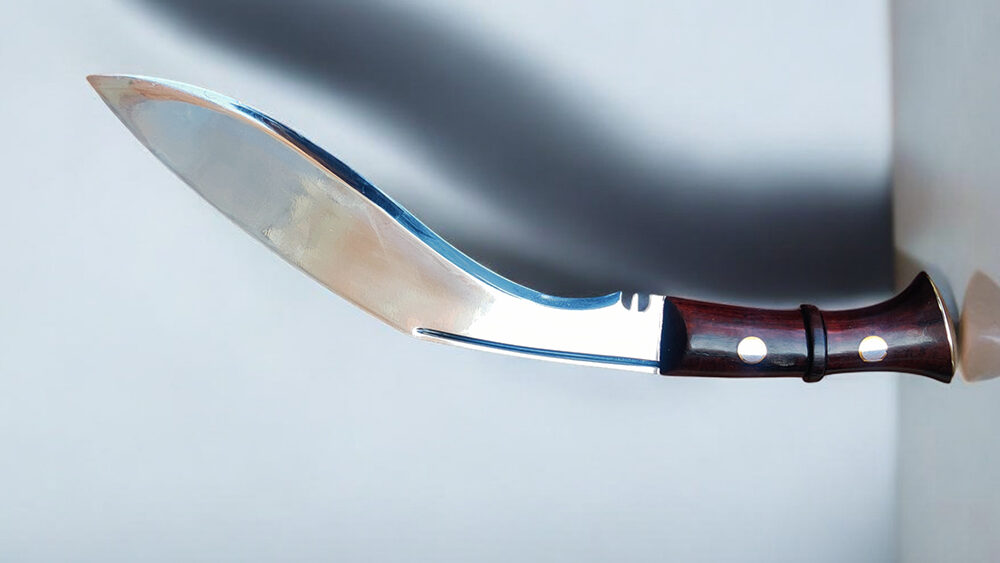
The MK4 kukri knife is one of those knives that has history. Initially designed in the 1950s, it’s now one of the rarest patterns.
12.5″ blade, 5160 steel, 400–450g
[Full flat tang] custom handle and finish of your choice
Perfect for the camper wanting portability and functionality without chopping capability. It is simplest design makes it an ideal choice for campers, hikers and bushcrafter.
MK2 Combat Kukri Knife — Tested and Battle Proven
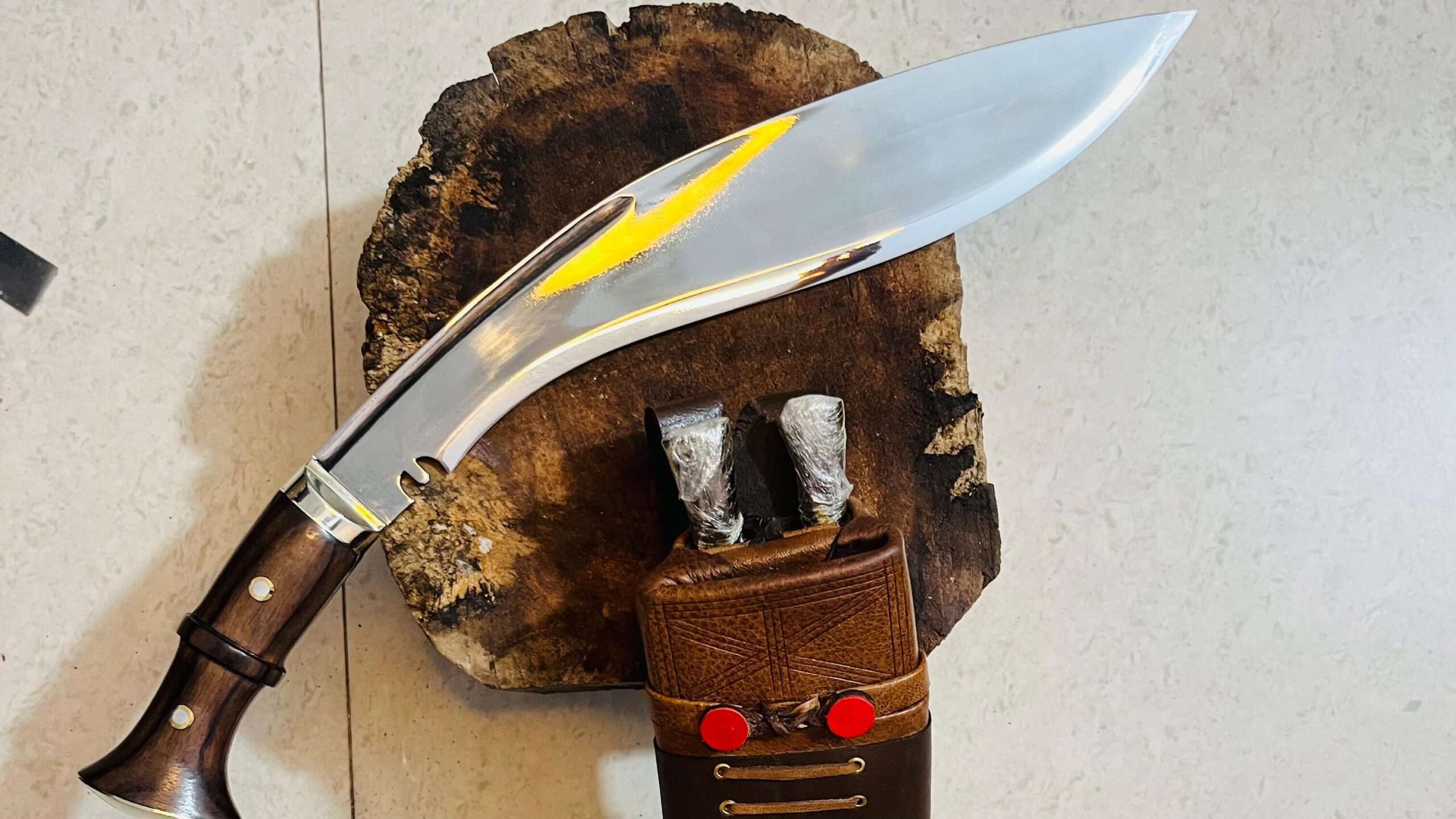
The MK2 Khukuri is the backbone of the kukri industry. I’ve watched it fell trees, split bone, and outlast harder blades.
13.3″ blade, convex edge
590–680g weight for chopping power
10 inches Forged High Carbon Steel Full tang with Pinned rivets and Indian Rosewood handle
For survival and heavy outdoor use, it’s my number one choice. A serious Kukri. Watch this non-edited raw video to check the performance of this kukri here.
Afghan Kukri Knife — The Light Workhorse of the People
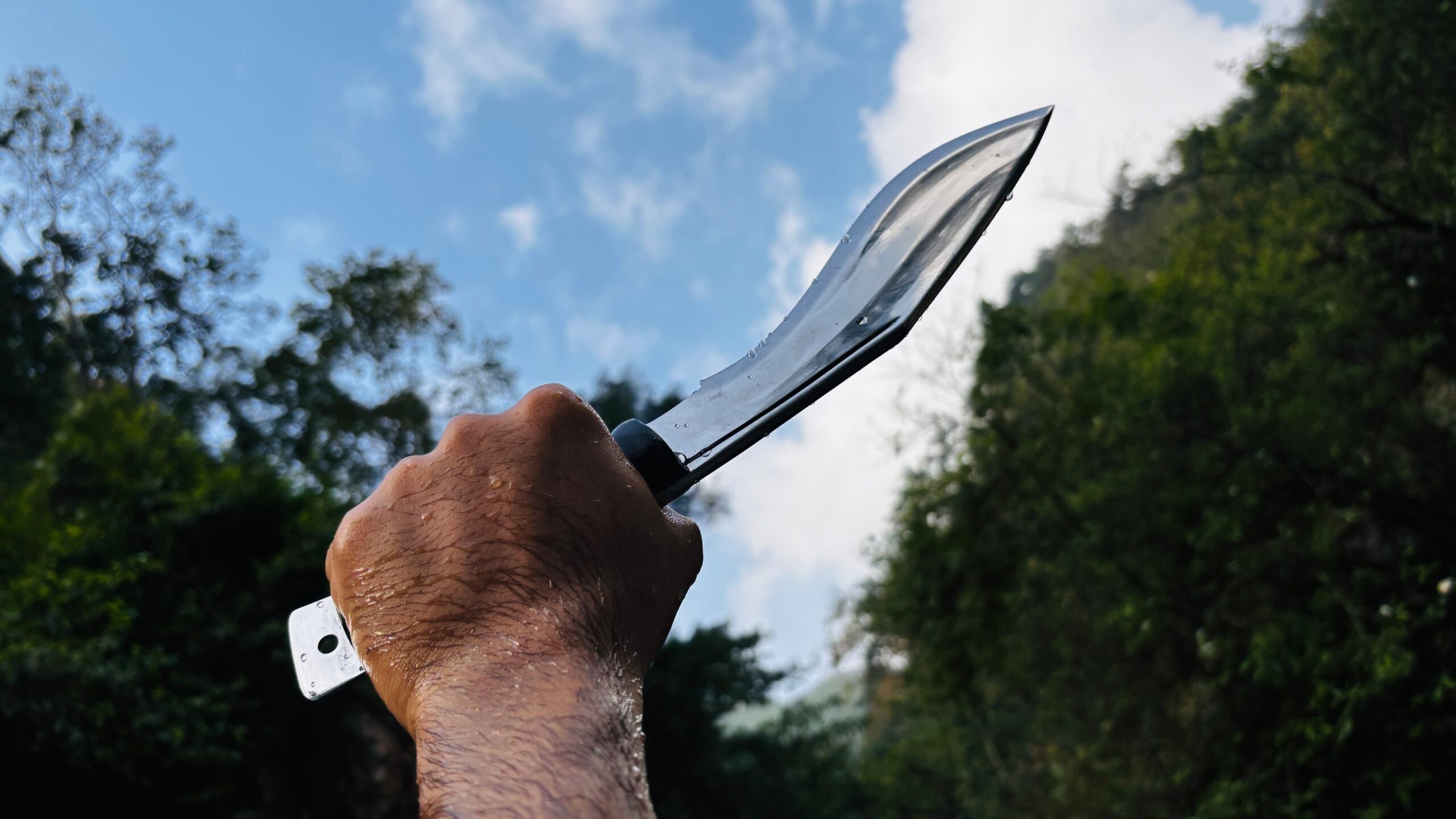
If I could only have one kukri for EDC, this would be the one, the Afghan Khukuri.
8.5″ blade with double fullers
Feels very compact and comes with a lanyard hole for extra grip.
Karda (utility knife) and Chakmak (honing tool).
Great for food prep, camp kitchen duties, and quick chopping
So, last time when I was testing this kukri near the waterfall, my hand was wet and the kukri was slipping out of my hands, I attached the lanyard to the kukri, it gave a very strong and confident grip. Watch the toughness test of this kukri here.
GR War Serupate Kukri Knife — The Need for Speed and Agility
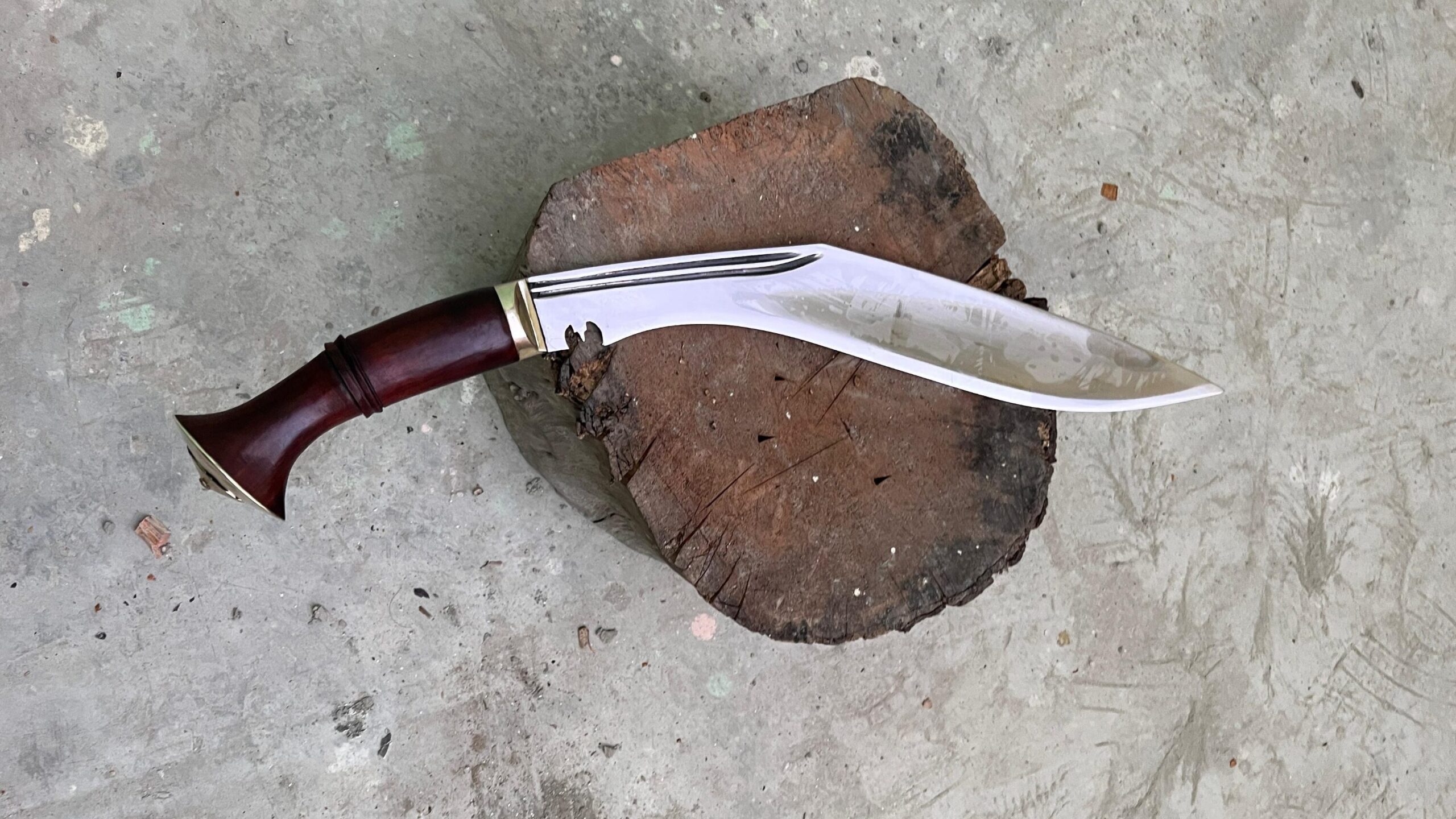
Fast mover Smoking in battle behind enemy lines!! “This is a Special Gurkha Kukri.”
The 6th GR Kukri knife has a 13.5-inch blade length, and yet it is very light. It features a beautiful curved design and a curved handle.
13–14″ blade, hollow-forged 5160
420–490g weight, slimmer profile
Stick tang, traditional build
Great for martial arts training as well as collectors who favor speed over raw cutting power.
Royal Tin Chira Kukri Knife — A Collector’s Fantasy
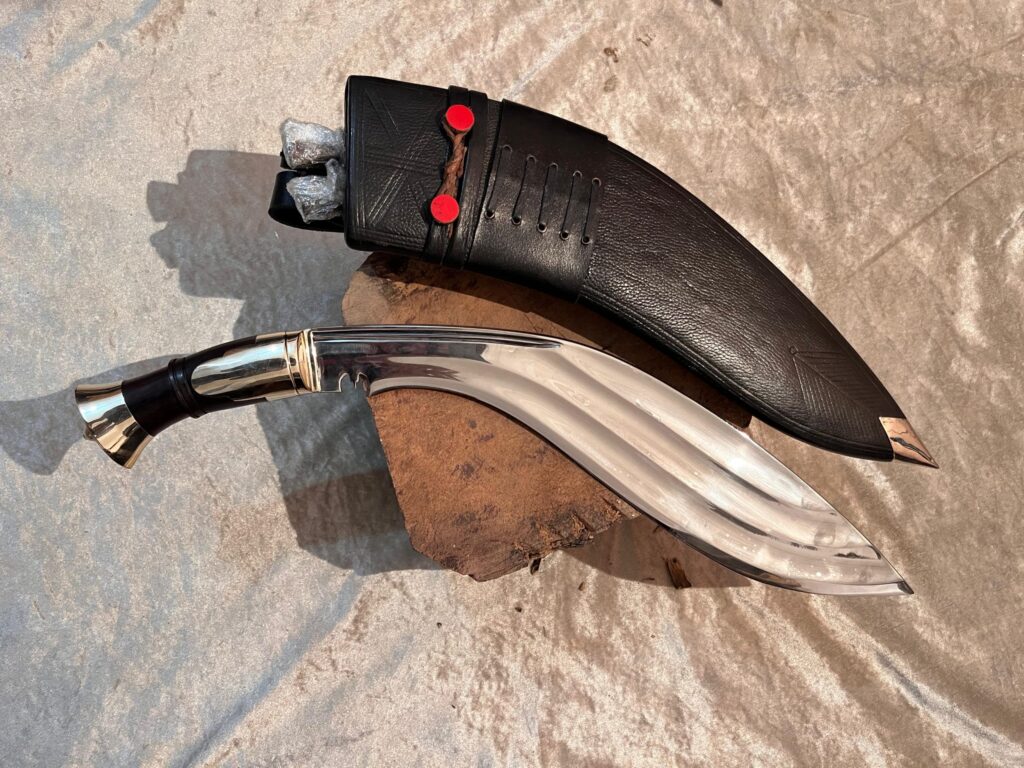
This is the kukri people dropping in mid-sentence. The three fullers are to lighten it and give it strength.
The Royal Tin Chira kukri knife is widely loved by collectors and art enthusiasts. The Kukri weighs 680 to 730 gm. It is heavy even after adding fuller due to its overall design from the handle to the blade. The majority of people keep it a collection, but it does fall behind in functional aspects.
13.9″ blade, 5160 steel
Beautiful rosewood or horn handle with metal works on the handle.
Balanced perfectly at the grip
Useful implement and handsome showpiece
Lessons From Real Use
- Some things can only be learned through experience:
- What is as important, if not more than the weight of a kukri, is how that weight is distributed. I’ve owned a 700g khukuri knife that tired me quicker than a well-balanced 900g kukri.
- Bad sheaths are dangerous. I’ve even lost a kukri to a slippery sheath on a mountain trek. Between then and now, the first thing I look at is sheath quality.
- 5160 saves mistakes. I’ve got dull edges, yes, I have never broken one. Harder steels? I’ve snapped them mid-chop.
- The Karda and Chakmak are underrated. I use the Karda for small cutting tasks and, depending on my needs, select a chakmak to work out in the field, sometimes.
You can also go through the 6 traditional kukri knives that are reborn from history.
Read about the origin of the kukri knife.
Maintaining Your Kukri Knife
If you would like to discuss your kukri that will last a lifetime here is what I use:
- Grease or oil the blade after a trip.
- Stroke rolling when you sharpen to maintain a convex edge.
- Dry the sheath, and check retention.
- Don’t over-polish — its scratches tell the story of how it has been used.
Final Recommendation
If you will have just one kukri knife in 2025, I would recommend the MK2 Military Kukri in 5160 steel. It’s sturdy, balanced and reliable in nearly every situation.
The Afghan Kukri is just the ticket for light use. And if you’re a collector, the Royal Tin Chira is exactly the sort of blade that you’ll want to show off and pass on.
A kukri knife is more than an instrument. It’s a companion. The right one will see you through camping trips, and survival situations, maybe even into the hands of others.
FAQ on Kukri Knives
Q: What’s so good about a kukri versus a machete?
Because its forward curve gives you more chopping force for less effort.
Q: What kind of steel is used to make a kukri?
Good carbon steel (5160 spring is for generations of outdoors use) — durable, reliable, and field-sharpenable.
Q: Can you cook with kukris?
Yes. Meat, vegetables, and daily kitchen tasks in many Nepali homes are handled with them.
Q: Do I want a full tang or a stick tang?
For heavy outdoor chopping, opt for a full tang. Stick tangs are also good and sturdy is done correctly.
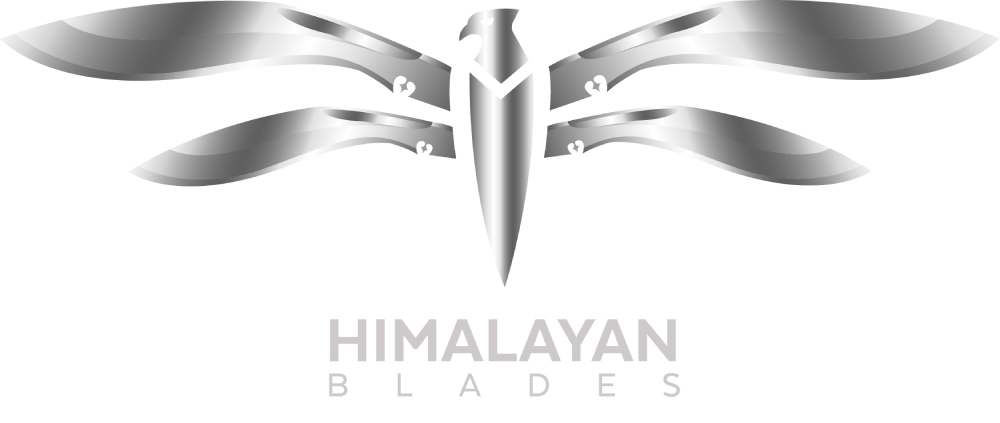





Wonderful work! That is the kind of info that should be shared around the net. Shame on the search engines for no longer positioning this put up upper! Come on over and talk over with my site . Thanks =)